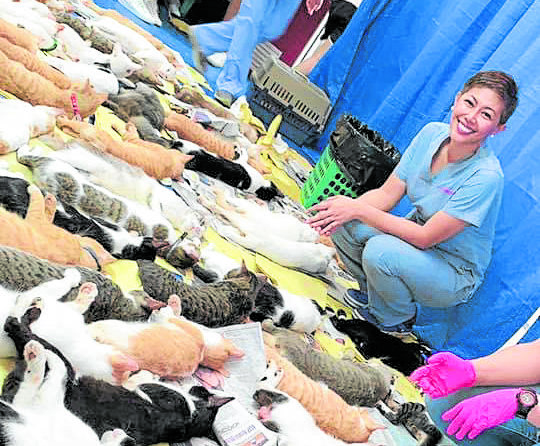
I have been a veterinarian for 18 years. I was born on World Animal Day (Oct. 4, 1978) which is also the Feast Day of St. Francis of Assisi, the patron saint of animals. For 18 years, I’ve been celebrating my birthday with an event that I am passionate about: animal welfare and rabies eradication.
Animal welfare is significantly proportional to a nation’s status. For a third world country, it means less attention to animal welfare.
However, we have the Animal Welfare Act, which protects and promotes the welfare of all animals. It’s not limited to dogs and cats, but also to farm, zoo and corral animals.
These are the five basic freedoms of animals:
1. Freedom from hunger and thirst. Meaning, all animals should have access to fresh water and food.
2. Freedom from discomfort. Provide an adequate environment or shelter.
3. Freedom from pain, injury and disease. Animals should have access to veterinary care and treatment.
4. Freedom to express normal behavior. Their nature should be respected. They should be able to be what they are.
5. Freedom from fear and distress. We should respect their well-being.
World Animal Day is celebrated by doing an act to protect their rights and welfare. But couldn’t we do this every day?
Being a small animal care practitioner, my views and sentiments are limited only to cats and dogs.
But I can speak of so many things that make our country a horrible place for animals. There are so many things that our government fails to address. I can point fingers but I choose to be proactive about it.
While many pets are fortunate to be treated as family, fed properly and well taken care of, more dogs and cats are out there on the streets, waiting for their next meal and looking for shelter. Often, they are netted and dragged from the streets and into pound trucks.
Antirabies vaccine
Catching stray dogs and cats is legal, and it is for our protection from rabies. Rabies is an infectious disease of warm-blooded animals, though not all dogs and cats have rabies. It enters the body through an open wound and travels 10-14 days from the site of infection to the brain. And once it’s in the nervous system, it is almost always fatal.
Dogs and cats can be infected by rabies in the same manner as humans. They could die of it also.
But as scary as rabies sounds, the bite of a rabid dog or cat isn’t always deadly, since there’s a vaccine for rabies. Pets can also be vaccinated.
It sounds so simple, right? But with probably millions of street dogs and cats in our country, how can we possibly eradicate rabies?
I advocated for spay/neuter during my early years as a veterinarian. Then I delved deeper and did my own research on how other countries were able to eradicate rabies: They humanely control dog and cat population by neutering.
Neutering is a safe surgical procedure that renders an animal incapable of reproduction by removing its testicles for males and ovaries/uterus for females.
But any surgical procedure is expensive. And that’s how Philippine Pet Birth Control Center Foundation, which I founded, evolved as a spay/neuter foundation. Rather than catching stray dogs and cats and making them suffer and die, why not do something more humane and deal with the problem with compassion?
As we celebrate World Animal Day and Animal Welfare Week, may we think about all our acts that make a significant impact on animals. I swear to keep on advocating for a rabies-free Philippines. After that, we can move on to another group of animals that also needs attention and action. —CONTRIBUTED














































